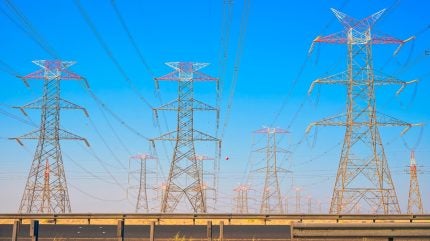
The US Federal Energy Regulatory Commission (FERC) has released its 2025 summer assessment, projecting the energy market and electric reliability outlook for June to September 2025.
The report indicates that under normal operating conditions, the US should have sufficient generating resources to meet expected summer demand and reserve requirements.

Discover B2B Marketing That Performs
Combine business intelligence and editorial excellence to reach engaged professionals across 36 leading media platforms.
However, it warns of tighter margins due to retiring generation resources and rising load, particularly from hyperscale users such as data centres.
Regions including the Northeast Power Coordinating Council (NPCC), New England, the Midcontinent Independent System Operator (MISO), the Electric Reliability Council of Texas (ERCOT), the Southwest Power Pool (SPP), and the PJM (Pennsylvania-New Jersey-Maryland) Interconnection are identified as having a higher risk of tight generation availability.
Contributing factors include above-normal electricity demand, low wind and solar output, wildfires disrupting transfers and retirements of existing generation capacity.
Wholesale electricity prices are anticipated to rise during the summer of 2025 compared to the previous year across most regions, with the northeastern US particularly affected.

US Tariffs are shifting - will you react or anticipate?
Don’t let policy changes catch you off guard. Stay proactive with real-time data and expert analysis.
By GlobalDataThe price hike is partly attributed to increased natural gas prices, which have been influenced by lower storage levels following a colder winter.
The US National Oceanic and Atmospheric Administration (NOAA) forecasts a 40% to 60% chance of higher-than-average temperatures in the western and southeastern US, and a 30% to 50% chance in the central and northeastern US for June through to August 2025.
Such high temperatures could exacerbate stress on the electric grid by driving up electricity demand over a broad area, thereby reducing the availability of imported electricity.
Approximately 60% of US capacity for hydroelectric generation at the utility scale is located in the regions of the Pacific Northwest, the Desert Southwest and the Rocky Mountains.
Despite lower reservoir storage levels, the US Energy Information Administration (EIA) projects a 6.2% increase in US hydropower generation availability from 2024, mainly due to improved conditions in the Northwest. This reverses the recent decline in US hydropower generation.
In a related development, US House lawmakers have introduced a budget proposal aiming to eliminate clean energy tax incentives and reduce funding for electric vehicles and renewable energy.
This proposal is part of a larger effort to pass a budget that aligns with the priorities of US President Donald Trump.





